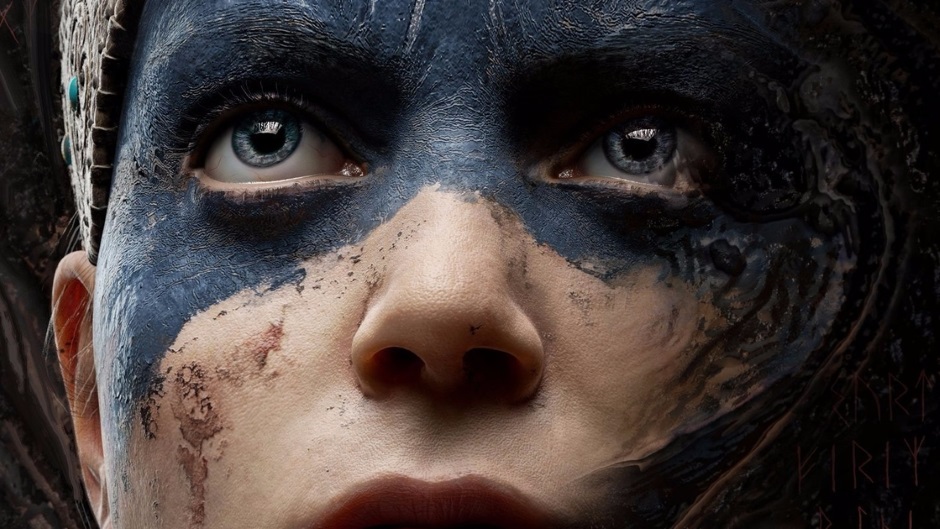Our Hellblade: Senua's Sacrifice review round-up covers permadeath and (sometimes helpful) voices

Hellblade is the culmination of years of work, the first fully independent production from the developers of Heavenly Sword and DmC: Devil May Cry, and the reviews are finally in. With this story of a Celtic warrior's descent into the Norse underworld, Ninja Theory wants to prove that it can make a character-driven action game that's at least as gripping and polished as its old publisher-backed productions, all by itself.
Is Hellblade a remarkable success, or at least an interesting failure? Let's see what the critics think about its most important elements.
Hellblade's incremental permadeath - PC Gamer (78%)
"The trouble is that mistakes mean something here. Senua doesn't have many opportunities to screw up. Hela infected her arm with rot, and the tendrils of decay creep further up her limb with each death. And when they reach her head? Game Over. Progress erased. It's a possibly contentious element that helps make Senua's plight relatable. When she hesitates, I hesitate. When she's scared, I'm wary. I have something at stake, too, however minor.
"The approach explains the relatively short eight or nine-hour running time. It's not as harsh as it could be. I died maybe six times in my playthrough, and by the end the rot had only snaked up around three-quarters of her arm."
Hellblade's exploration of mental illness - Eurogamer (No score)
"More importantly, Hellblade gives a sensitive depiction of psychosis without making any grand pronouncements about the nature of mental health. It shows simply and clearly that Senua's psychosis makes her struggle greater; that she's struggled with mental illness and the consequences of others not understanding mental health for years. Senua's journey is a quest of stygian proportions, and yet she is a profoundly human heroine. Senua survives by surviving - through sheer strength of will, not by any innate mystical powers or gifts. She's the anti-dragonborn."
Hellblade's inner voices - GameSpot (8/10)
"Using binaural audio - which makes wearing headphones a must for the full effect - you'll get to experience a taste of what it's like to have several voices in your head. In many ways, it feels like a subversive take on the common video game trope of the bodiless companion offering help via radio, making them a somewhat distressing presence you desperately wanted to keep at arm's length. The effectiveness of the inner voices in making you uncomfortable is a testament to the stellar presentation of the game, which uses some rather inventive tricks to play with perspective and audio-sensory manipulation. It does well to make you feel on edge and in a state of confusion, while simultaneously getting you to focus on the more tangible and true elements of her surroundings - even if they are still hallucinations."
Hellblade's combat - Digital Trends (3.5/5)
"Fighting monsters in Hellblade always feels intense, but becomes predictable once you understand its rules. Wait for an enemy to strike and parry them before striking back. If they have a shield, you have to break their guard first. If they have a larger two-handed weapon, you have dodge and get in close. Mechanical simplicity isn’t necessarily a problem - many Soulslikes use it to great effect - but it requires a wide array of enemy types to keep things interesting. Aside from a few bosses, you’ll be running into the same few enemies over and over again, and battles begin to lose some excitement as a result."
Weekly digests, tales from the communities you love, and more
Hellblade's performances - VentureBeat (95/100)
"Ninja Theory does an outstanding job of realistically rendering an animated human face - better than I’ve seen in any other game. The studios used the Unreal Engine, 3 Lateral, and Cubic Motion technology to capture [Senua actress Melina] Juergens’ acting performances and render them as an animated game character. The nuances of facial movement are exact. Senua’s eyes are expressive, watering up in emotional moments and expressing fright during moments of terror. Over time, Senua collects dirt, scars, and bloodstains on her face, but underneath, you can see it is still her. I think we’re over the uncanny valley, or the notion that the more realistic an animation of a human face becomes, the more eerie and wrong it feels."
Hellblade's puzzles - Push Square (8/10)
"In fact it’s only the final pillar of the psychosis depiction that falls short. Many with the disease say that they find meaning in everyday objects that others can’t see, and so a lot of Hellblade’s puzzles revolve around perspective similar to some of those found in The Witness. Unfortunately, the mechanic is overused, and scouring the environments for hidden runes soon becomes a pace-sapping hindrance that you’ll grow to loathe.
"Thankfully, not all of the puzzles are poor: one section finds you virtually blinded and cleverly relying on sound to navigate a labyrinth and avoid enemy encounters; another introduces torches and light sources to help you combat an unseen antagonist who only appears in the dark. The game’s really good at keeping you on the edge of your seat, as evidenced by a mechanic that sees Senua gradually overcome by the darkness with each time you fail."
So, in summary: Hellblade is dulled by some repetitive enemy design and puzzles, and it could be super frustrating if you ever die enough for it to erase your save (which you probably won't). But those are relatively minor dings on an otherwise keen edge, a game with heights of cathartic action and depths of utter despair and uncertainty. Sounds like Ninja Theory's experiment has paid off.
I got a BA in journalism from Central Michigan University - though the best education I received there was from CM Life, its student-run newspaper. Long before that, I started pursuing my degree in video games by bugging my older brother to let me play Zelda on the Super Nintendo. I've previously been a news intern for GameSpot, a news writer for CVG, and now I'm a staff writer here at GamesRadar.



